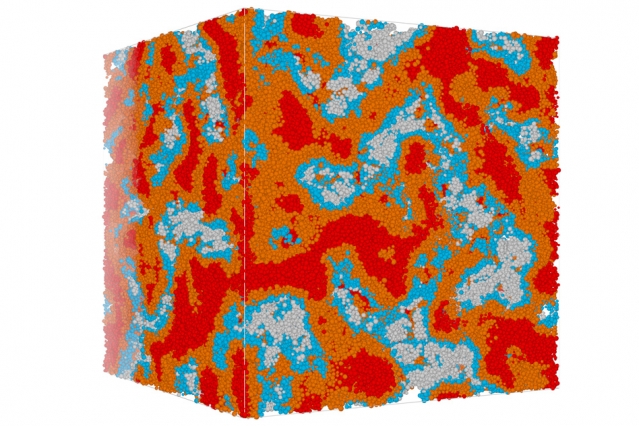Scientists have solved the main riddle of the structure of concrete

Material scientists have finally decided whether frozen concrete is a continuous structure, such as metals or stones, for example, or a compressed group of small particles. This question, despite the long and abundant use of this building material, remained unanswered for a long time. It turned out that concrete combines the features of both structures.
The internal structure of the material is concerned with the section of condensed matter physics called “ mesoscopic physics ”. It examines the properties of systems on scales intermediate between macroscopic and microscopic — that is, between the size of individual atoms and those on which quantum effects cease.
')
Concrete, a mixture of water, gravel, cement and sand, was investigated by an international team from Massachusetts Technology, Georgetown University, the French National Center for Scientific Research and other institutions. Scientists claim that their discoveries regarding the structure of concrete will allow engineers to create more efficient materials, both in terms of strength, and in terms of reducing greenhouse gas emissions during production. This is very important because there is so much concrete in the world that its production is one of the most important factors for greenhouse gas emissions.
It turned out that in concrete, small particles are distributed in such a way that there are always smaller particles among several larger ones. One of the authors of the study, Roland Pellenq [Roland Pellenq], explains that these small particles interact very closely with each other on a mesoscopic scale. At the same time, the particles are not so small as to reach a state with minimal energy - because of this, the material is subject to change, and with time it can crumble or crack.
Determination of the effect of pore size on mesoscopic scales on the properties of the material has not been carried out up to this point. Namely, the presence of pores of such dimensions determines the properties of the material and the susceptibility of its degradation. In particular, it turned out that the cracking of concrete is not due to the fact that water penetrates into these pores, which then freezes at negative temperatures.
New computer simulations of the properties of the finished material allow you to precisely adjust the proportions of the components necessary to obtain a better result . For example, too little water will make the solution insufficiently liquid for pouring, and too much will leave after its evaporation large voids in the finished material.
Source: https://habr.com/ru/post/390293/
All Articles